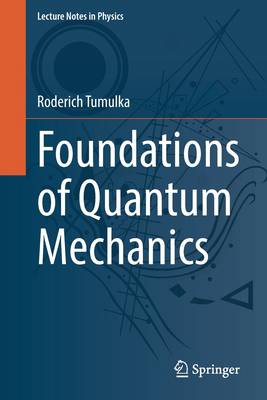
- Afhalen na 1 uur in een winkel met voorraad
- Gratis thuislevering in België vanaf € 30
- Ruim aanbod met 7 miljoen producten
- Afhalen na 1 uur in een winkel met voorraad
- Gratis thuislevering in België vanaf € 30
- Ruim aanbod met 7 miljoen producten
Omschrijving
1. Waves and Particles
1.1 Overview
1.2 The Schrodinger Equation
1.3 Unitary Operators in Hilbert Space
1.3.1 Existence and Uniqueness of Solutions of the Schrodinger Equation
1.3.2 The Time Evolution Operators
1.3.3 Unitary Matrices and Rotations
1.3.4 Inner Product
1.3.5 Abstract Hilbert Space1.4 Classical Mechanics
1.4.1 Definition of Newtonian Mechanics
1.4.2 Properties of Newtonian Mechanics
1.4.3 Hamiltonian Systems
1.5 The Double Slit Experiment1.5.1 Classical Predictions for Particles and Waves
1.5.2 Actual Outcome of the Experiment
1.5.3 Feynman's Discussion
1.6 Bohmian Mechanics
1.6.1 Definition of Bohmian Mechanics1.6.2 Historical Overview
1.6.3 Equivariance
1.6.4 The Double Slit Experiment in Bohmian Mechanics1.6.5 Delayed Choice Experiments
Summary
Exercises
References
2. Some Observables
2.1 Fourier Transform and Momentum
2.1.1 Fourier Transform
2.1.2 Momentum2.1.3 Momentum Operator
2.1.4 Tunnel Effect
2.2 Operators and Observables2.2.1 Heisenberg's Uncertainty Relation
2.2.2 Self-Adjoint Operators
2.2.3 The Spectral Theorem
2.2.4 Conservation Laws in Quantum Mechanics
2.3 Spin2.3.1 Spinors and Pauli Matrices
2.3.2 The Pauli Equation
2.3.3 The Stern-Gerlach Experiment
2.3.4 Bohmian Mechanics with Spin
2.3.5 Is an Electron a Spinning Ball?2.3.6 Is There an Actual Spin Vector?
2.3.7 Many-Particle Systems
2.3.8 Representations of SO(3)2.3.9 Inverted Stern-Gerlach Magnet and Contextuality
Summary
Exercises
References
3. Collapse and Measurement3.1 The Projection Postulate
3.1.1 Notation
3.1.2 The Projection Postulate
3.1.3 Projection and Eigenspace
3.1.4 Remarks3.2 The Measurement Problem
3.2.1 What the Problem Is
3.2.2 How Bohmian Mechanics Solves the Measurement P
Specificaties
Betrokkenen
- Auteur(s):
- Uitgeverij:
Inhoud
- Aantal bladzijden:
- 468
- Taal:
- Engels
- Reeks:
- Reeksnummer:
- nr. 1003
Eigenschappen
- Productcode (EAN):
- 9783031095474
- Verschijningsdatum:
- 23/11/2022
- Uitvoering:
- Paperback
- Formaat:
- Trade paperback (VS)
- Afmetingen:
- 156 mm x 234 mm
- Gewicht:
- 675 g

Alleen bij Standaard Boekhandel
Beoordelingen
We publiceren alleen reviews die voldoen aan de voorwaarden voor reviews. Bekijk onze voorwaarden voor reviews.









